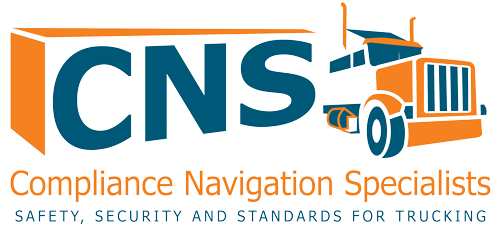How Trucking Companies Can Survive (and Thrive) Amid High Costs and Low Rates

The trucking industry is facing one of its most turbulent periods in recent memory.
According to the 2025 Operational Costs of Trucking Report from the American Transportation Research Institute (ATRI), skyrocketing non-fuel operating expenses and plunging freight rates are squeezing profitability to historic lows.
The average truckload carrier now faces an operating margin of -2.3%, underscoring the urgency for fleets to adapt, cut waste, and find new efficiencies.
In this article, we’ll break down the biggest cost drivers and offer proven strategies and best practices that motor carriers can implement to manage costs, optimize operations, and weather the economic storm.
What’s Driving the Cost Crisis?
While the average cost of operating a truck dropped marginally in 2024 to $2.260 per mile, that improvement was largely due to lower fuel prices. When excluding fuel, marginal costs rose 3.6% to $1.779 per mile—the highest non-fuel costs ATRI has ever recorded.
Key line-item cost increases include:
- Truck and trailer payments: Up 8.3% to $0.390 per mile
- Driver benefits: Up 4.8% to $0.197 per mile
- Driver wages: Up 2.4%, still outpacing revenue growth in many fleets
Meanwhile, revenue-generating metrics declined:
- Truckload sector operating margin: -2.3%
- Empty miles: Up to 16.7%
- Drivers per truck: Down to 0.93 (trucks parked due to lack of freight or drivers)
So, how can fleets prevent these cost burdens?
Best Practices for Managing Costs and Boosting Resilience
1. Use Benchmarking to Gain Insight and Direction
Implement a benchmarking strategy that enables the organization to monitor performance, identify inefficiencies, and drive continuous improvement across cost, operations, and human capital.
Action Tip:
Use the ATRI report and other TMS (transportation management system) dashboards to:
- Monitor and compare cost-per-mile by category
- Set KPIs for idle time, driver turnover, and maintenance intervals
- Identify outliers in asset utilization or payroll
Read this detail Fleet Benchmarking Guide to learn more and get started.
2. Control Equipment Costs with Smarter Fleet Planning
With truck and trailer payments hitting a record high, fleets must revisit capital spending plans. Buying newer trucks may lower maintenance costs, but the high price of new equipment may not justify the ROI in a tight freight market.
Strategies to Consider:
- Extend equipment life: Improve maintenance practices to safely operate trucks longer
- Lease strategically: Consider short-term leases to maintain flexibility without long-term capital drain
- Sell underutilized assets: If a truck is idle, it’s a liability—liquidate excess capacity to reduce payments and insurance
Learn More: Implementing Fleet Management Strategies for Maximum Efficiency
3. Get Aggressive with Empty Mile Reduction
The increase to 16.7% empty miles is a massive profit killer. Improving backhaul planning and routing efficiency is one of the most effective ways to reduce waste.
Tactics for Success:
- Use digital freight matching tools and load boards more effectively
- Collaborate with other carriers on shared lanes
- Offer discounted backhaul rates to attract partial loads
- Invest in route optimization software
4. Reevaluate Driver Pay Structures
Driver wages remain one of the largest costs, yet driver retention and utilization are both slipping. Aligning compensation with performance and productivity is essential.
Best Practices:
- Offer performance-based bonuses tied to MPG, safety, and on-time delivery
- Shift some pay structures to reflect time utilization (e.g., hourly pay for detention-heavy lanes)
- Emphasize total compensation packages, including benefits, to retain top talent
5. Boost Operational Efficiency Through Technology
Trucking companies are surviving by doing more with less—fewer trucks, fewer drivers, fewer staff. Automation and technology can close the gap.
Recommended Tools:
- ELD and telematics systems: Monitor driver behavior, fuel efficiency, and maintenance needs
- AI-powered TMS: Automate load matching, pricing, and dispatching
- Fuel optimization platforms: Help drivers identify the best places and times to refuel
- Maintenance analytics: Reduce breakdowns and extend asset life
6. Control Non-Driver Labor Costs Without Sacrificing Service
Carriers reduced non-driver staff by 6.8% in 2024. While trimming overhead is necessary, losing institutional knowledge or customer service quality can have long-term impacts.
Recommendations:
- Cross-train staff to cover multiple roles
- Automate repetitive admin tasks (e.g., invoicing, compliance audits)
- Outsource specialized services like HR, safety, or drug & alcohol program management. This is where CNS shines, call to learn more today at (888) 260-9448.
7. Negotiate Smarter with Brokers and Shippers
With low spot rates, poor lane density, and fewer long-term contracts, many carriers are stuck in unprofitable freight cycles.
Carriers need to know their lanes, average rates, and operational costs so you can make a decent negotiation. Show the broker that you know your numbers and be honest with not accepting a load if it doesn’t make you money.
For example, if you know that lane capacity is high, meaning there are a lot of carriers but not a lot of freight, then you may want to change lanes or accept a cheap load to get you out and accept a second more profitable load on the new lane.
Tactics:
- Prioritize relationships with high-margin, consistent customers
- Push for better fuel surcharge agreements or shorter payment terms
- Offer value-added services like drop-and-hook or same-day delivery to justify rate premiums
- The quicker you can meet in the middle, the more you will consistently get good loads from the broker.
- Provide full details to the broker – your actual location and what equipment you are running – so the broker can better estimate what loads are near you, anticipate loading times, cutoff times, and more.
A Final Word: Focus on What You Can Control
While the macroeconomic environment is out of your hands, what you do inside your operation is not. Use the data, optimize relentlessly, and don’t go it alone.
Whether it’s through benchmarking, outsourcing, or adopting new technologies, now is the time to double down on efficiency and make every mile and minute count.
How CNS Can Help
At Compliance Navigation Specialists (CNS), we partner with small and mid-sized fleets to reduce compliance risk, manage costs, and improve safety. Our services include:
- Driver qualification and retention support
- Fleet maintenance programs
- ELD and telematics solutions
- HR and benefits support
- Outsourced safety management
Our PSM Custom Program will allow you to choose multiple services that you would benefit from without paying for each service a la carte.
If you need help or have any questions, contact us at 888.260.9448 or info@cnsprotects.com and we would be glad to help.
Questions about DOT Compliance, Licensing, Audits, Programs, etc.?
Our DOT Specialists are here to help!
What are you searching for?
Is DOT Compliance your Top Priority?
Our DOT Compliance Programs ensure it is your top priority and keeps your business running.
Related Services
Subscribe to our Monthly Newsletter
Receive the latest transportation and trucking industry information about FMCSA and DOT Audits, Regulations, etc.
Related news
Trucking News
Get the latest trucking news on DOT Compliance, Licensing, Audits, and more!

Pennsylvania’s Non-Domiciled CDL Program is Changing: What Happened, What Comes Next, and What Carriers Should Expect
Pennsylvania’s entire non-domiciled CDL system is heading for a major overhaul that is being pushed by federal pressure, public safety concerns, and politics. Here’s what

Benchmarking in Trucking: A Strategic Plan to Gain Insight, Improve Performance, and Set Realistic Goals
In today’s freight market—where profit margins are tight, costs are volatile, and efficiency is king—benchmarking is one of the most powerful tools available to business
